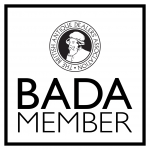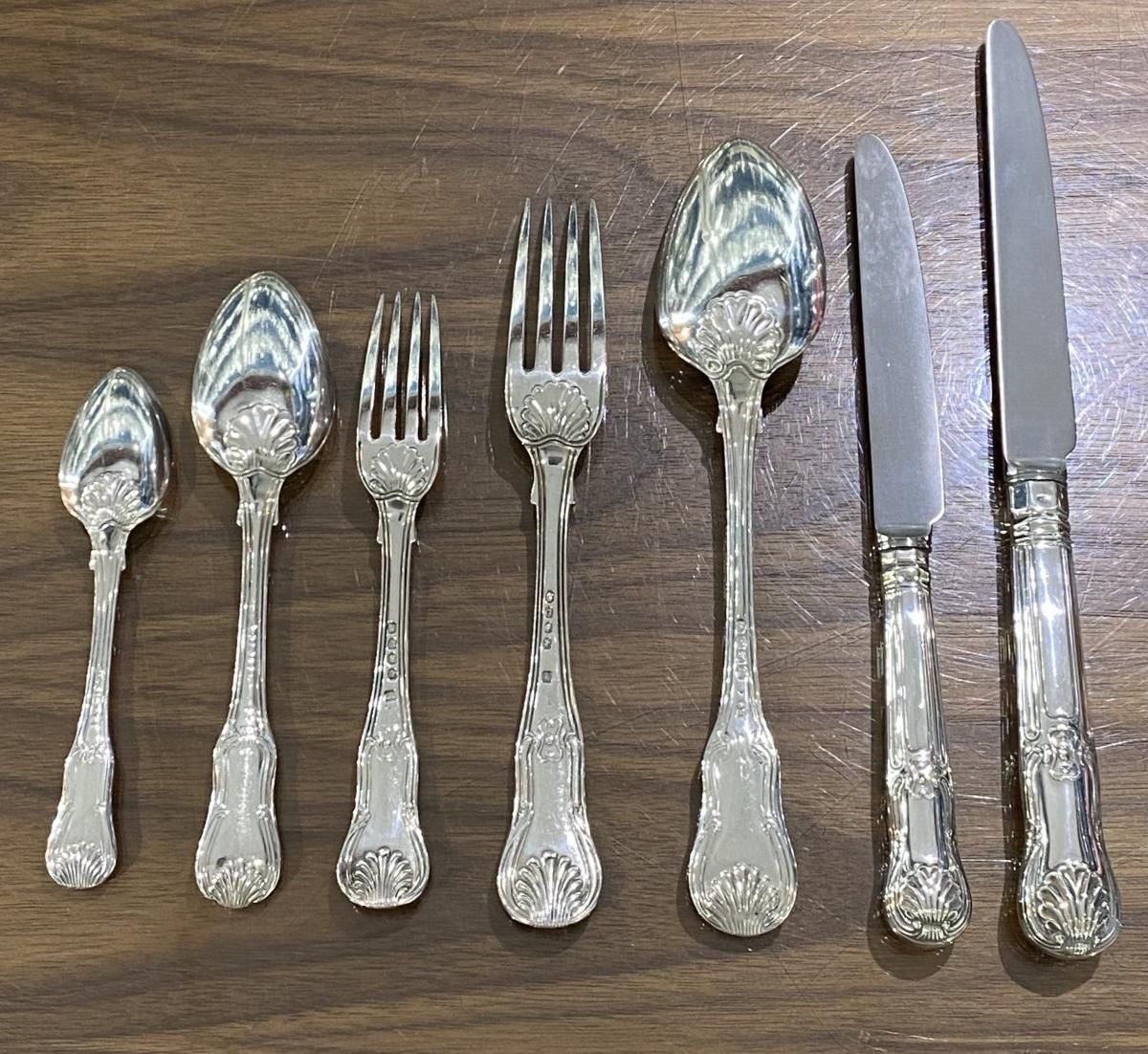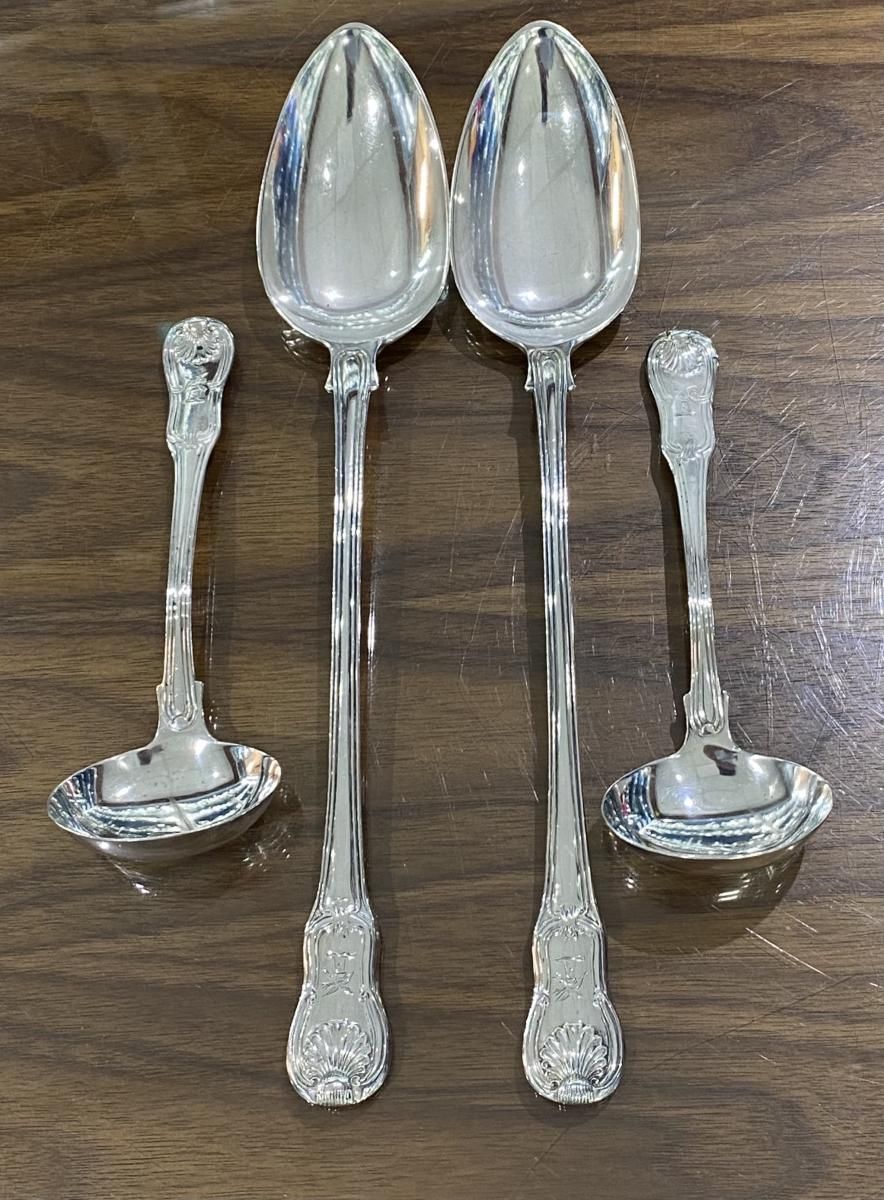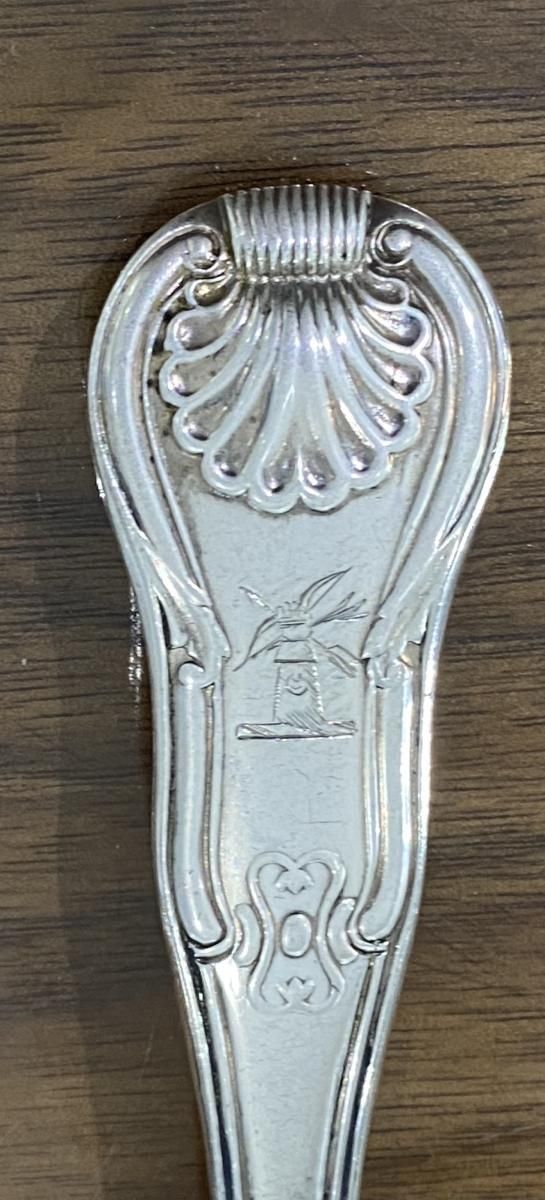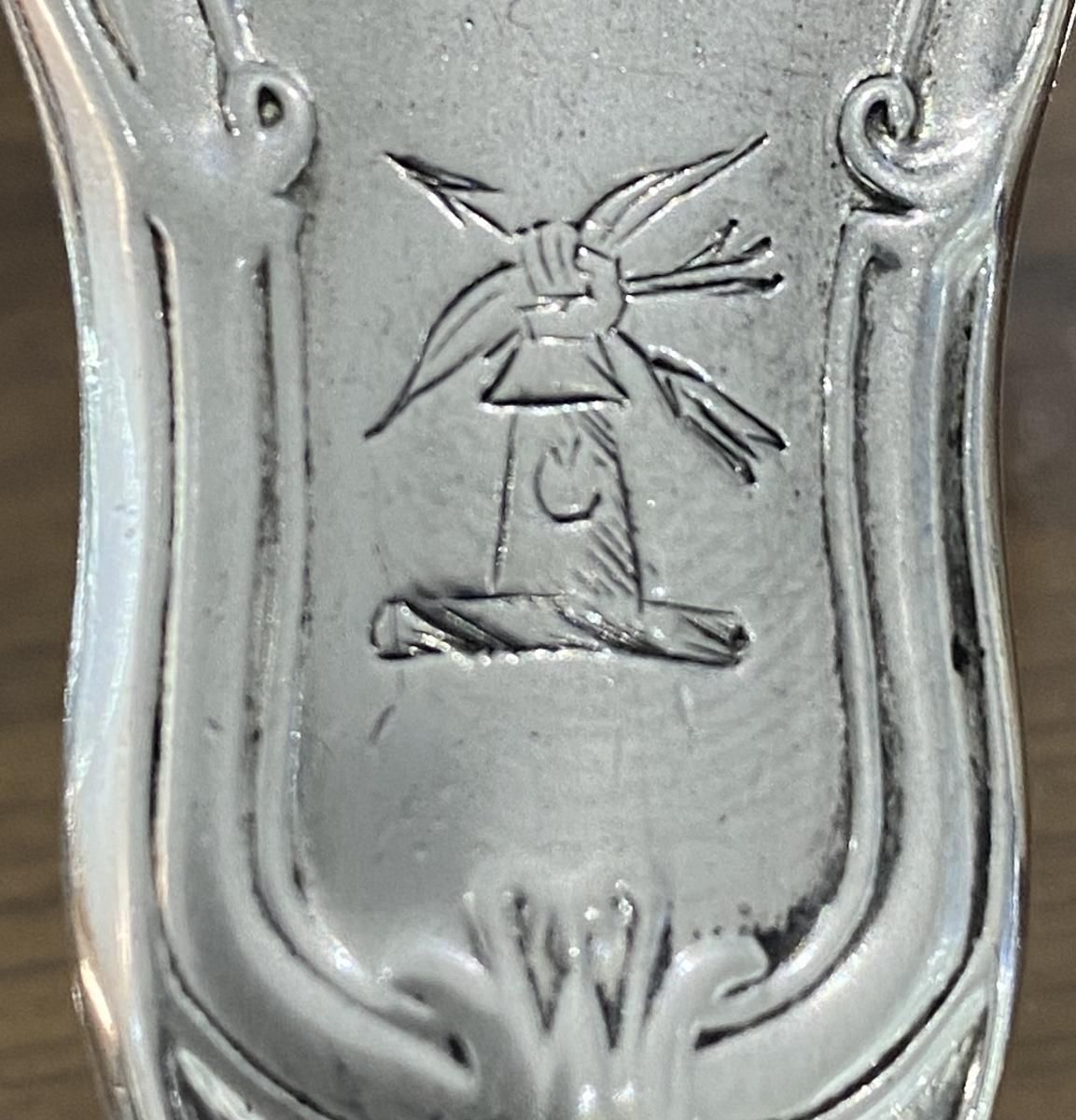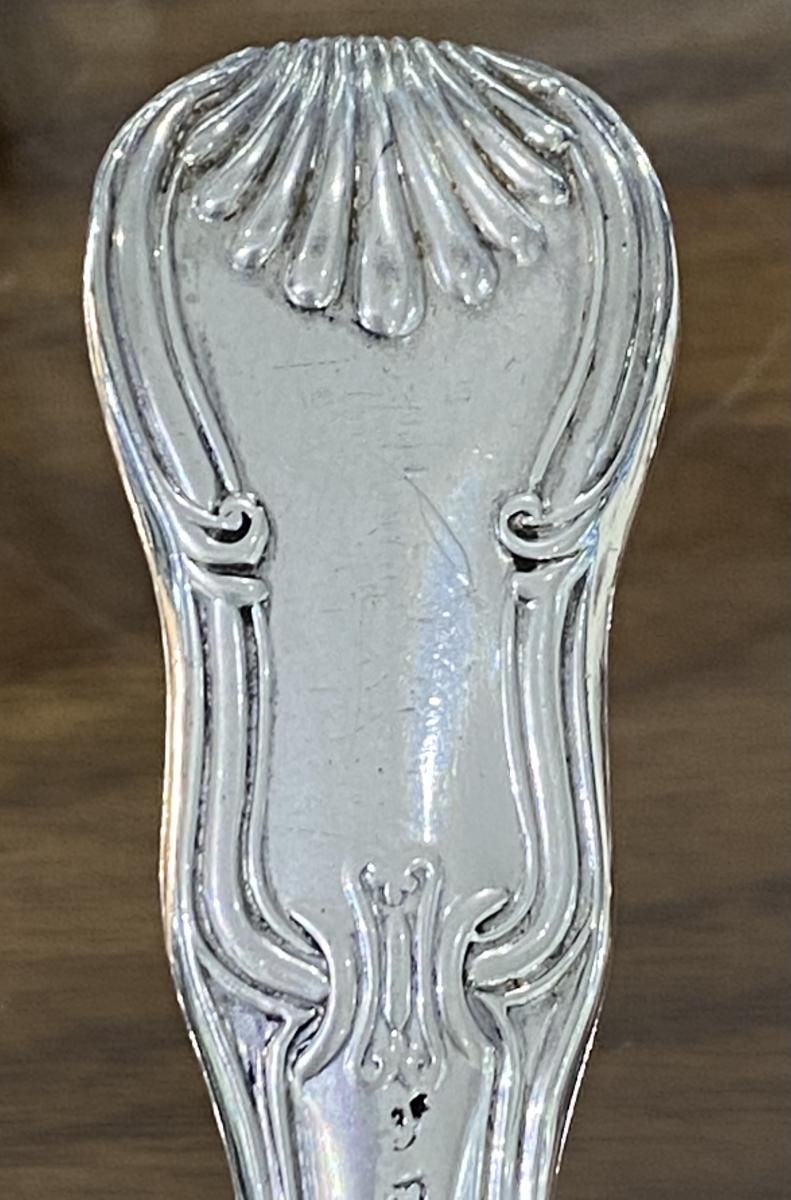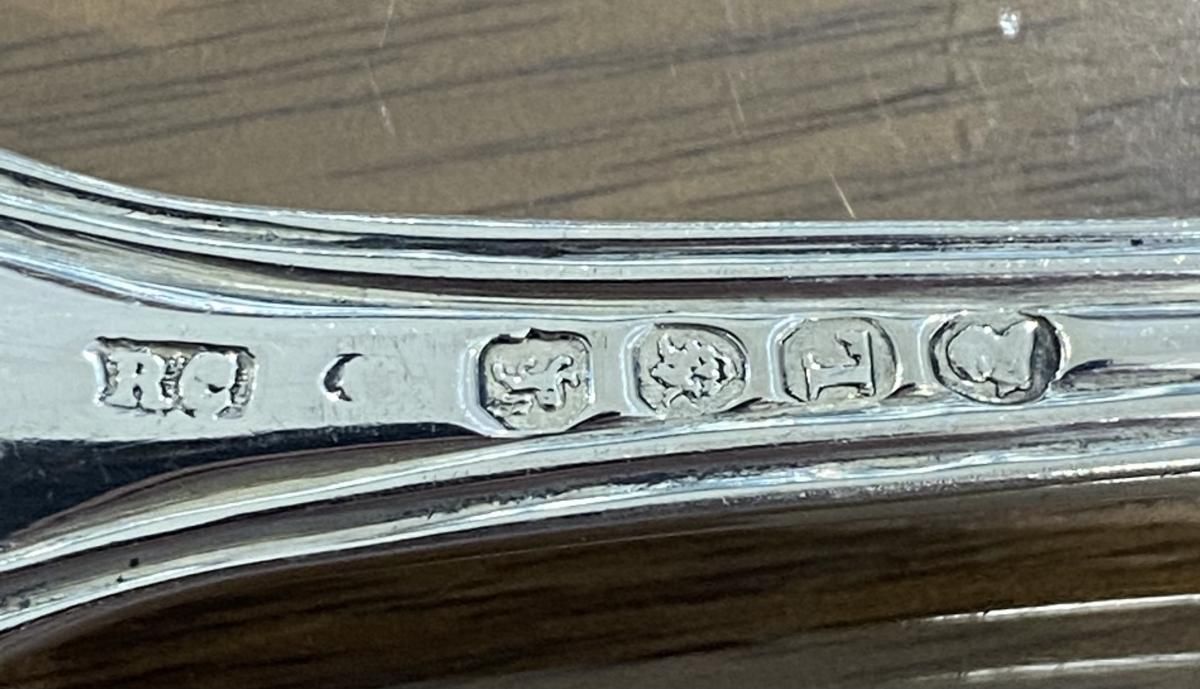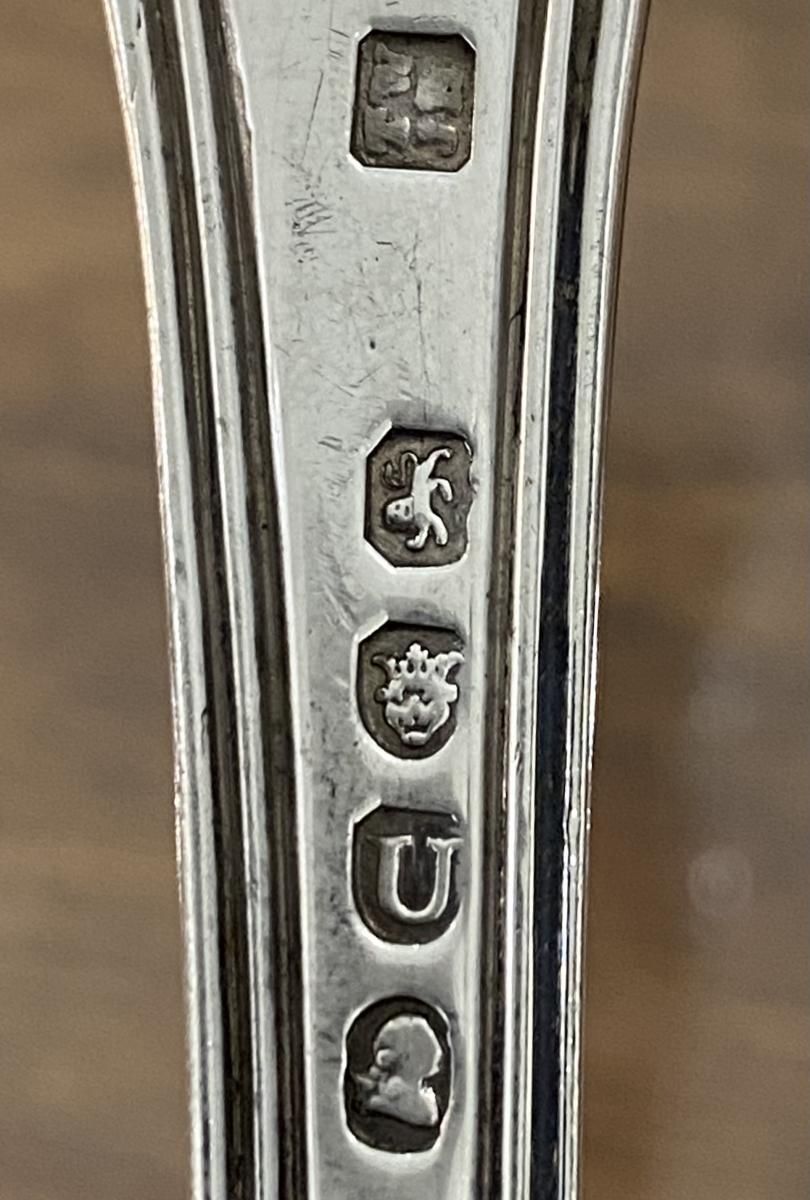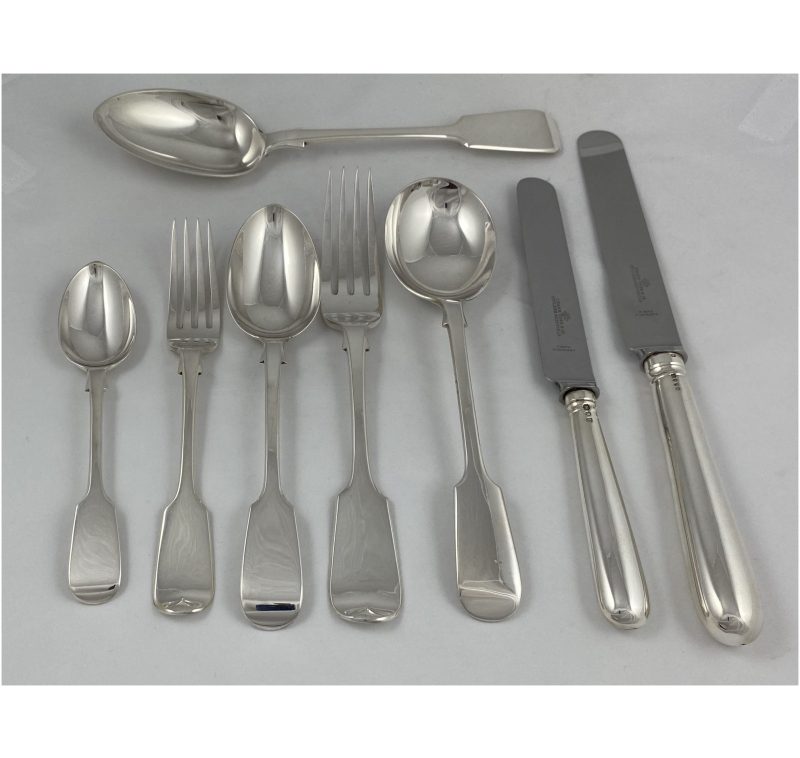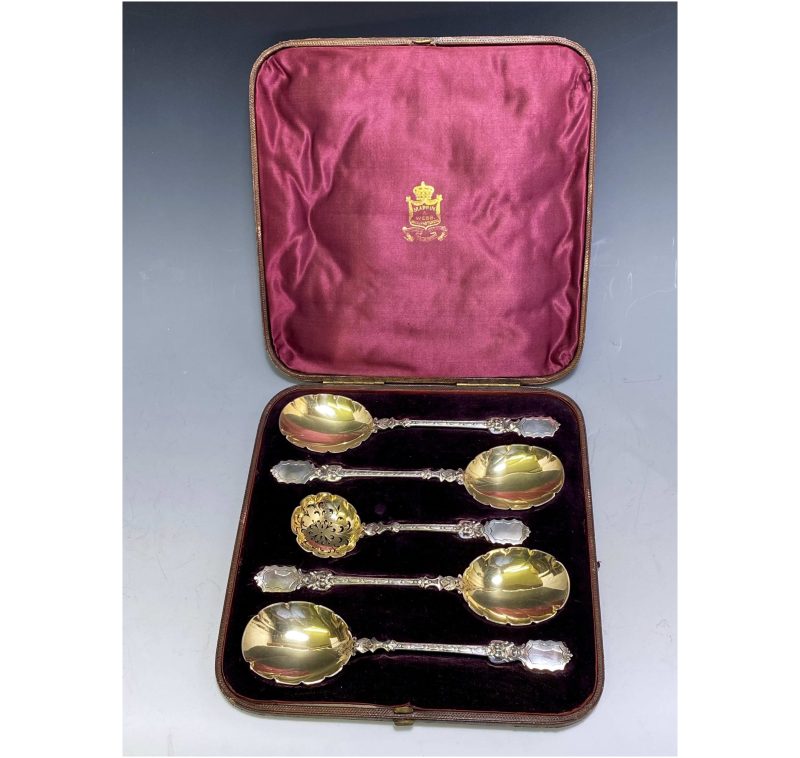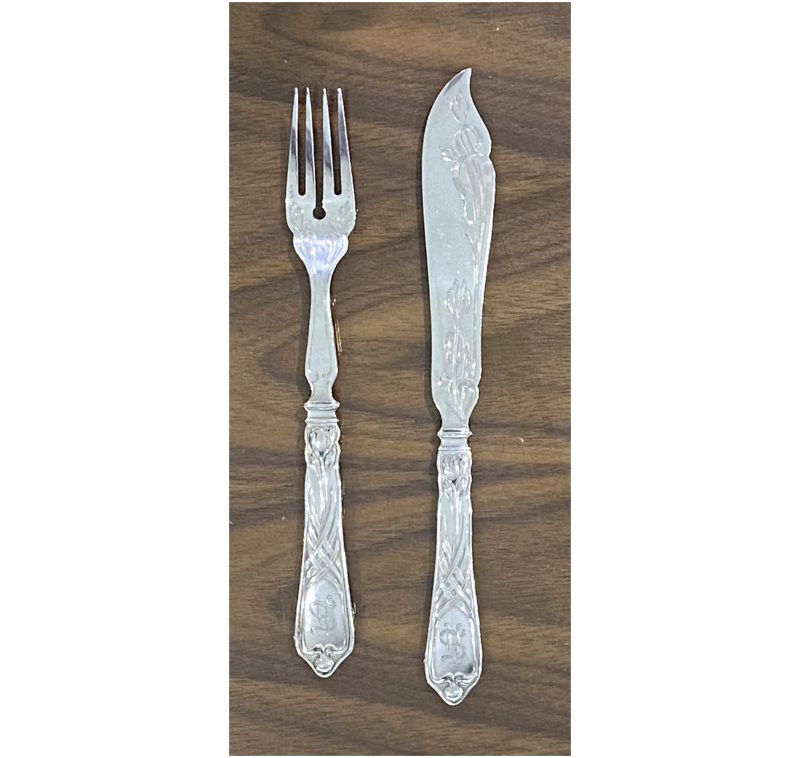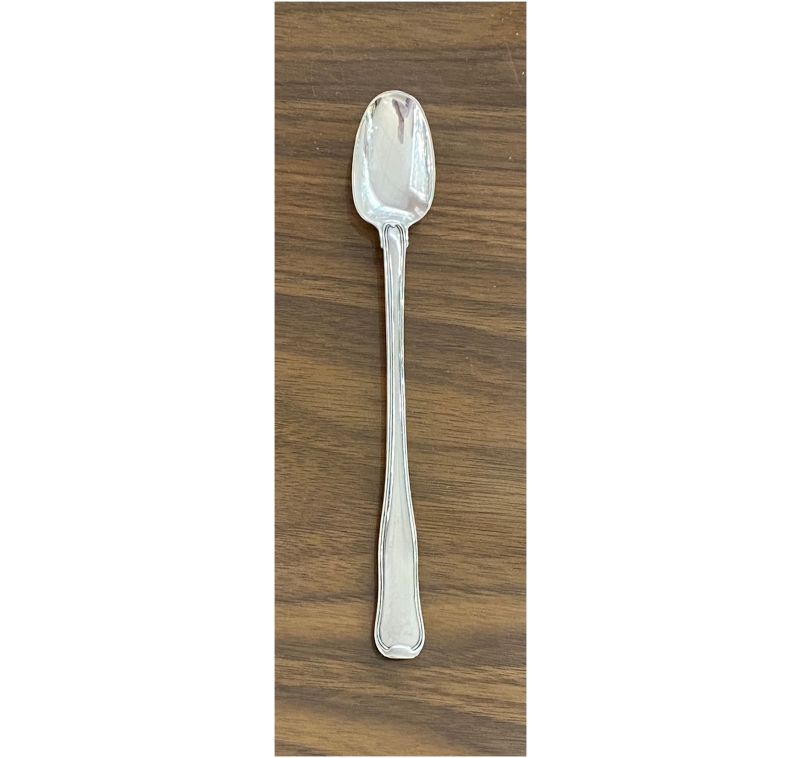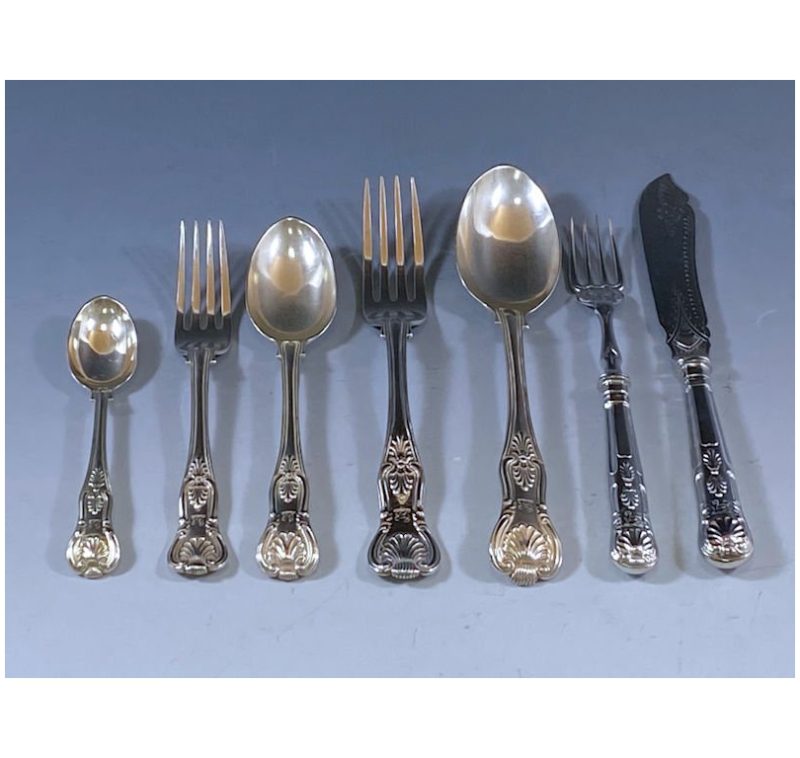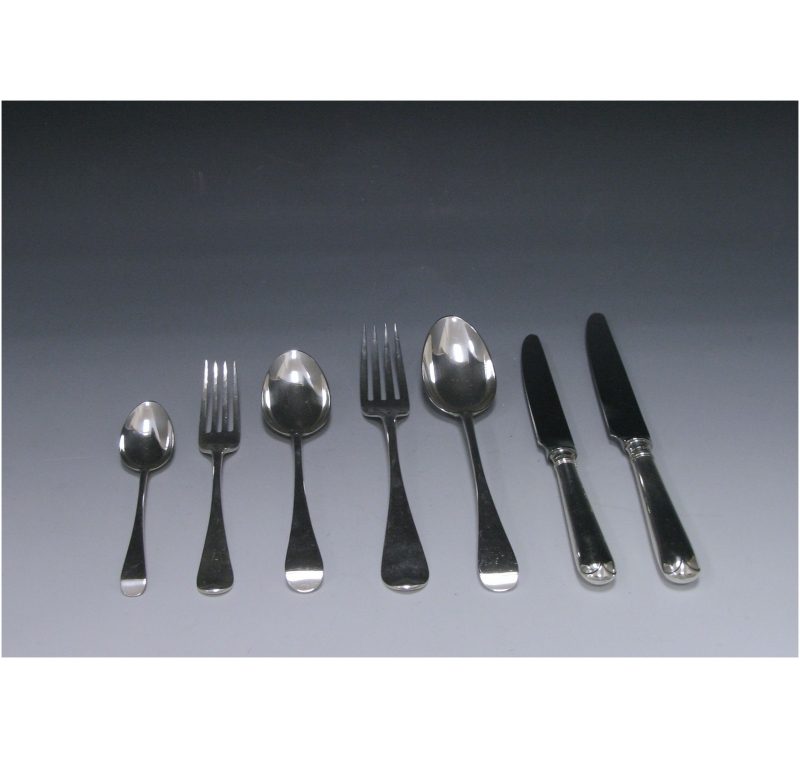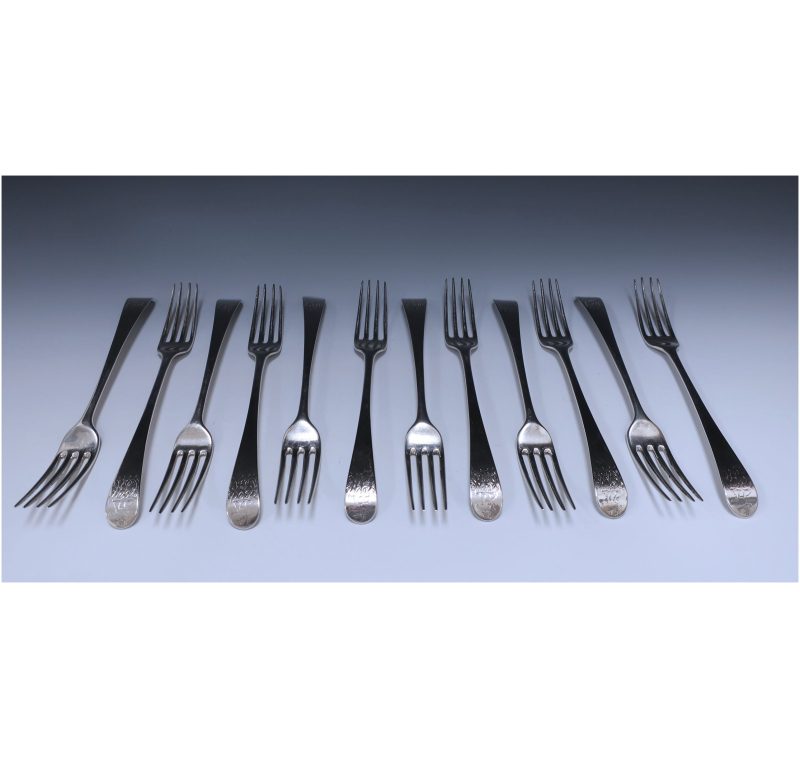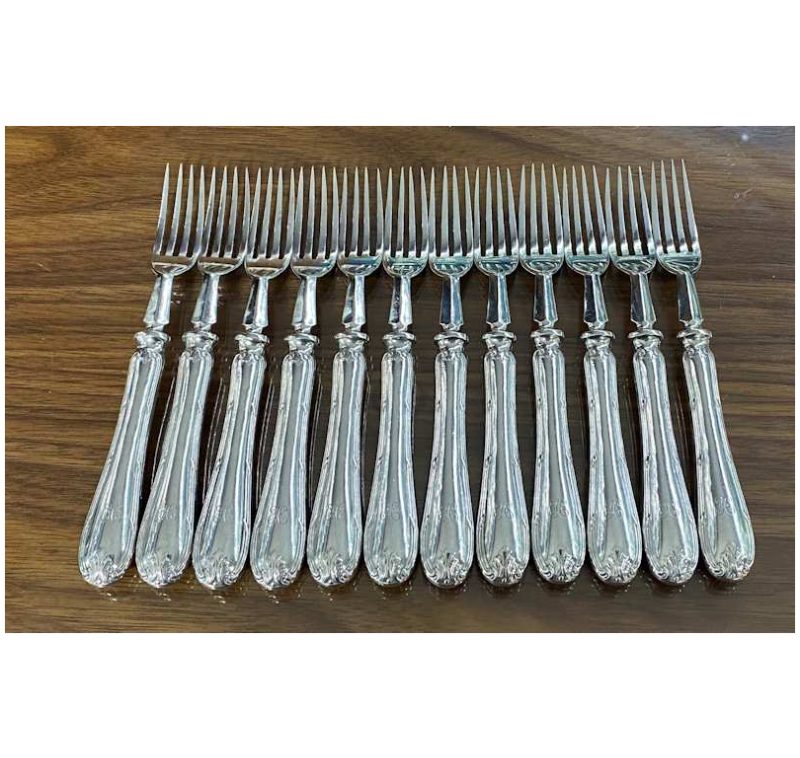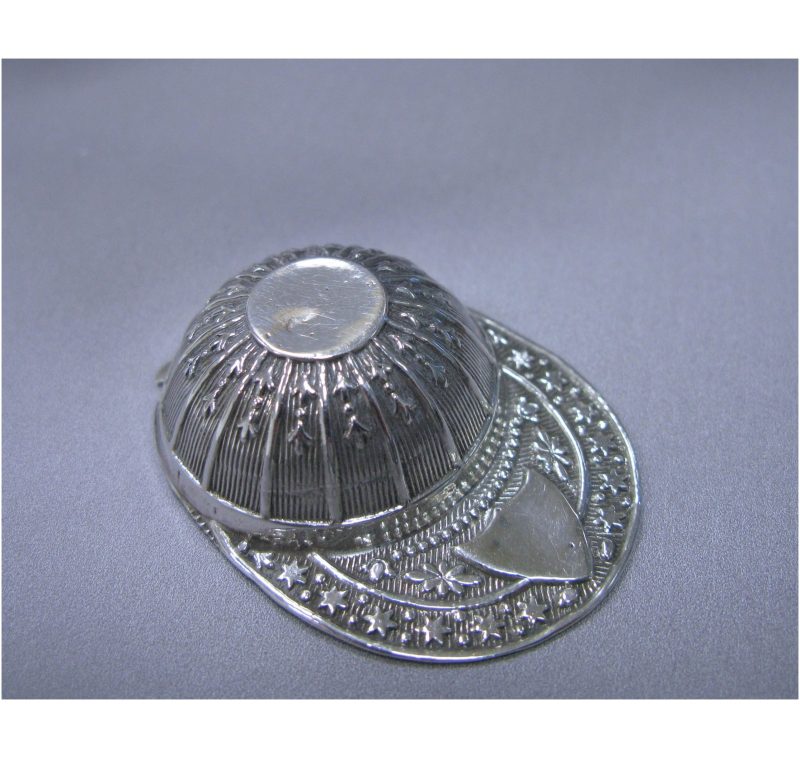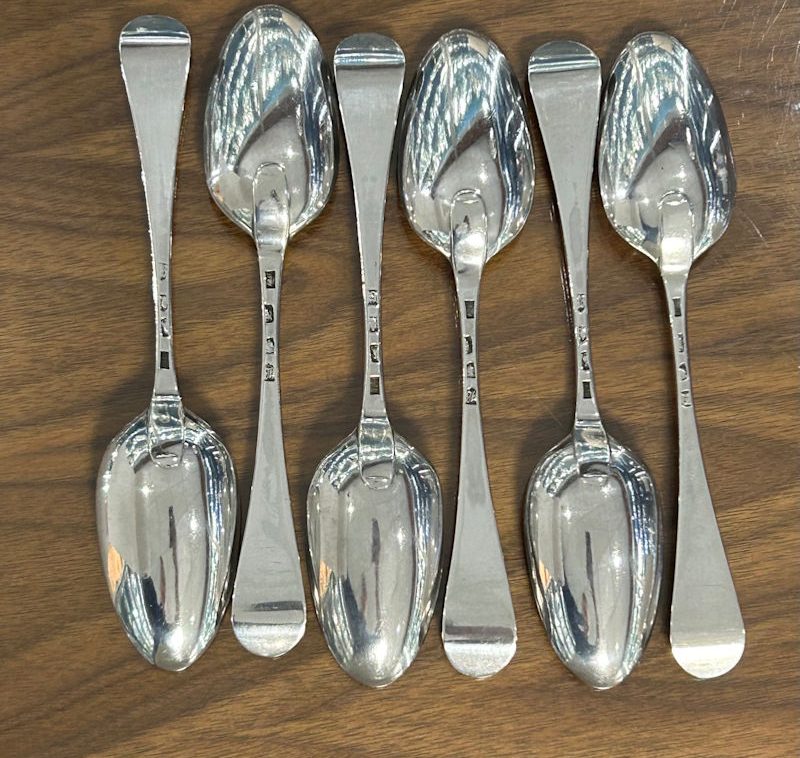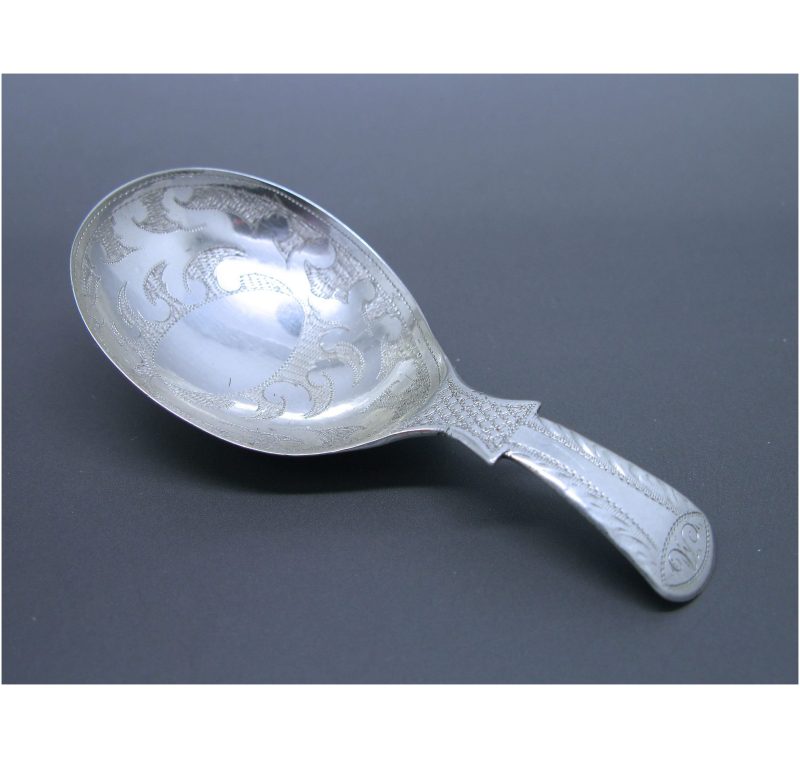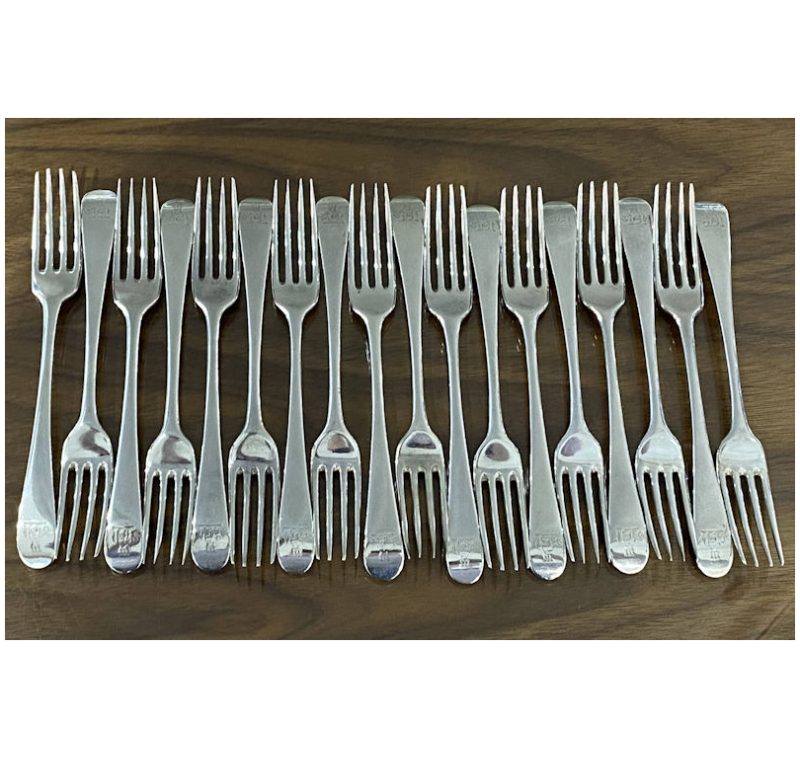Item Sold
Antique Silver George III Hourglass Pattern Cutlery / Flatware Service made in 1806-15
Sold
A fine and rare George III silver king's hourglass pattern flatware service made between 1806 and 1814-15 in London.
| Date | 1806 - 1815 |
| Made By | Jonathan Hayne, Richard Crossley, Thomas Wallis |
| Location | London |
| Stock Number | FA227x17 |

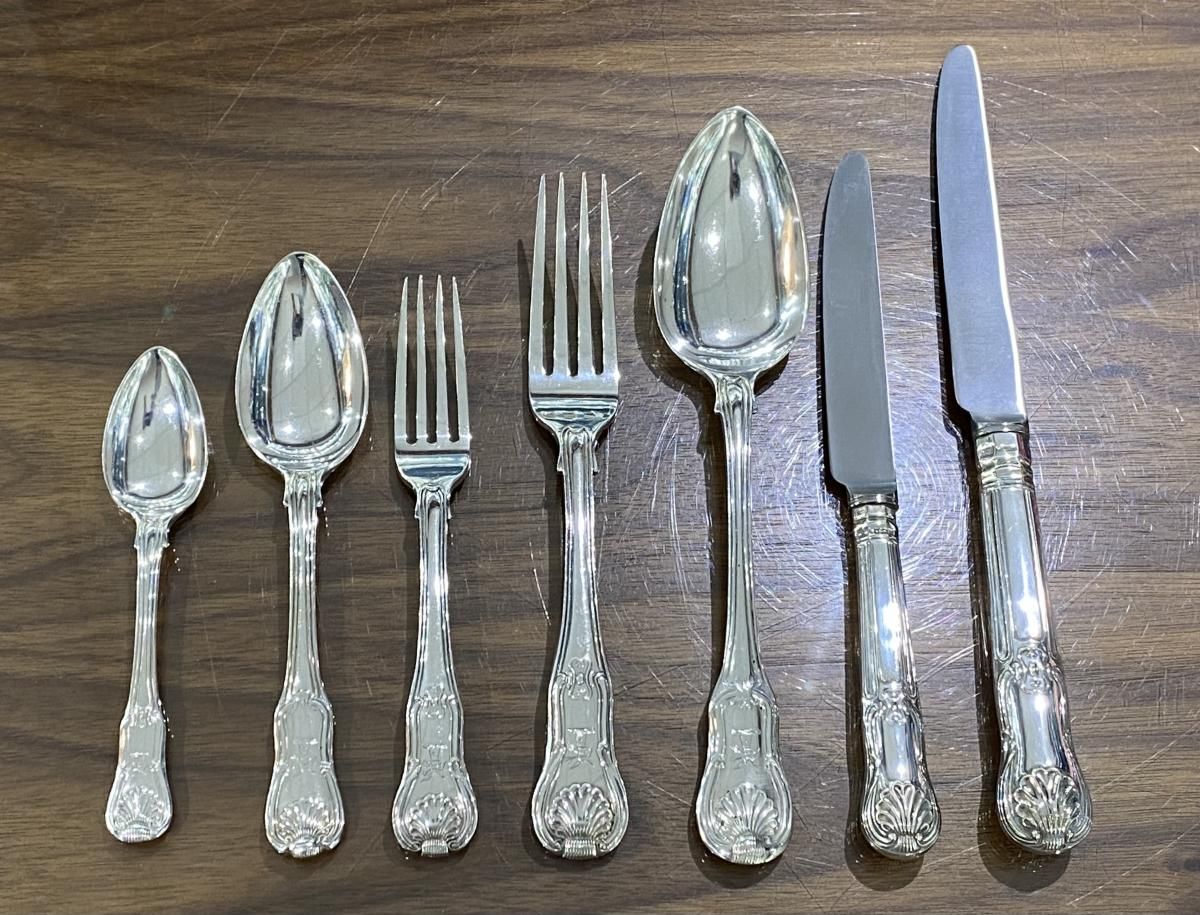
Added to basket
Antique Silver George III Hourglass Pattern Cutlery / Flatware Service made in 1806-15
Out of stock
A fine and rare George III silver king’s hourglass pattern flatware service made between 1806 and 1814-15 in London.
All the spoons – including the basting spoons and sauce ladles – are made by Richard Crossley in 1806 and all the forks are made in 1814-15 by the partnership of Thomas Wallis and Jonathan Hayne.
All the prices bear an attractive original family crest and the whole set is in wonderful condition.
The set comprises:
12 table spoons
12 table forks
12 dessert spoons
12 dessert forks
12 teaspoons
2 large basting spoons
2 sauce ladles
12 table knives
12 dessert knives
The knives are specially made and modern to match with stainless steel blades.
Complete patterned services of the George III period are very unusual and this is in particularly fine condition with the rare union shell heel.
Hourglass is a Regency pattern originating from French 18th century flatware. It has been produced steadily from the early 19th century to the present day. Occasionally, 18th century English and Scottish examples may be found.
It is distinguished from King’s and Queen’s by the hourglass-like device about one third of the way down the item.
There are three variants to be found:
Standard with diamond heel (common)
Union shell (scarce)
Thread heel (rare)
Many services – both straight and mixed – exist, with the diamond heel Hourglass one of the best patterns for building a service.
Hourglass pattern is often confused with King’s pattern.
Jonathan Hayne (1810 – 1848) was born in Clerkenwell, London, son of a surgeon. He apprenticed as a silversmith and started his career in 1810, entering his mark in partnership with Thomas Wallis, at 16 Red Lion Street, Clerkenwell. Six years later, Wallis and Hayne dissolved their partnership. In 1821, Jonathan entered his own first mark.
In 1833, Hayne increased his popularity, patenting a method of manufacturing silver spoons and cutlery in a single blow thanks to a heavy hammer. This method was illustrated in 1839 in “A Dictionary of Arts, Manufactures, and Mines” by Andrew Ure.
In 1836, Jonathan Hayne’s son, Samuel, went into partnership with Dudley Frank Cater and they entered their mark as Hayne & Cater. Samuel assumed the full control of the company after his father’s death in 1848 and continued trading until 1865, when he declared bankruptcy.
Richard Crossley was arguably one of the most important manufacturers of flatware in the late 18th and early 19th century. Unfortunately, very little is known about him.
He says: “I desire that my body may be buried at Wooburn in the County of Bucks near to the remains of my first wife and daughter, and that my funeral be organised in such manner as my trustees and executors hereinafter appointed shall think proper”. The inscription on his tomb says: “Sacred to the memory of Richard Crossley of Paradise House Islington, in the county of Middlesex, and formerly of London, Goldsmith.”
Information from the Buckinghamshire Record Office provided the following from a full transcript made of the tombs in Woburn Church Yard in the first half of the 19th century: “Richard Crossley Esq late of paradise House Islington in the parish of Middlesex and formerly of London Goldsmith, the third son of John Crossley of Hilton in the County of Derby who by Persevering Industry with the Strictest Integrity realised considerable Property which he bequeathed amongst his collateral relations and departed this life a Widower without leaving any Issue Surviving him on the 29th day of April 1815, aged 75 years.”
We provide worldwide postage/shipping and everything is fully tracked and insured. Purchases will be sent via Royal Mail Special Delivery, FedEx, Parcel Force, A-Z couriers; other delivery providers may be used in extenuating circumstances. We deliver to the address provided at the time of purchase but not to PO addresses, as a signature is required upon delivery.
Some countries levy import duties and local taxes. Payment of these is the purchaser’s responsibility and beyond the control of William Walter Antiques Ltd. When the container has reached the destination country, a customs representative will contact you for payment prior to delivery.
Import restrictions are applicable to some destinations, especially the import of products containing materials such as ivory and tortoiseshell. We cannot accept orders requiring shipment to any countries which implement such controls.
All items are checked and photographed prior to packaging, and we aim to dispatch 1-3 days after receiving cleared payment.
Delivery Charges:
For the UK £15.00
For Europe £30.00
For the rest of World £50.00
The charges are subject to change
At the heart of William Walter Antiques is our dedication to providing our customers with beautiful silver of supreme quality, which celebrates all that is precious about sterling silver. Customer service also being paramount, our long-standing, devoted staff team go above and beyond the call of duty for all our clients. We believe it is this combination of passion and commitment that has kept our customers with us for many years.
We accept credit/debit cards or bank transfer. Please submit an enquiry below or contact us on:
Phone Number
+44 (0) 207 242 3248
Email
info@williamwalter.co.uk
Visit us at the London Silver Vaults
William Walter Antiques,
London Silver Vaults,
53-64 Chancery Lane,
London, WC2A 1QS
Opening Hours
Mon – Fri: 10:00 – 17:00
Sat: 09:00 – 12.30

